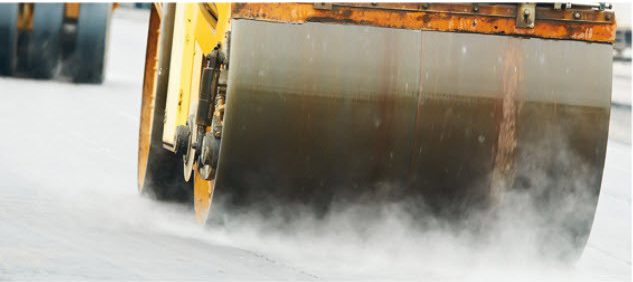Penetration Grades
Before, the penetration level was characterized dependent with the understanding that warm affectability in the bitumen utilized in street development was zero. Bitumen is a thermoplastic material, implying that it gets flexible or malleable over a particular temperature and gets back to a strong state after cooling.
Infiltration level bitumen is fundamentally utilized in street surfacing. Bitumen with lower infiltration grade is utilized in the areas with warm environment while higher entrance grade is utilized in colder climate.
Our Company is equipped for creating various levels of street surfacing bitumen in consistence with public and worldwide norms in its plants. penetration grade bitumen is reviewed dependent on infiltration and mellowing point tests. This table depicts the actual properties of penetration grade bitumen dependent on European principles. Infiltration level bitumen is primarily utilized in street development. During the most recent twenty years of the twentieth century, most street development projects showed tendency for strong bitumen which brings about more viable black-top.
| Test | Methodology | 30-40 | 40-50 | 60-70 | 85-100 | 100-120 |
| Density | ASTM D-7 | 1/01-1/06 | 1/01-1/06 | 1/01-1/06 | 1-01-1106 | 1-1105 |
| Penetration Rate at 25te | ASTM D-5 | 30-40 | 40-50 | 60-70 | 85-100 | 100-120 |
| Softening Point °C | ASTM D-36 | 55-63 | 52-60 | 49-56 | 45-52 | 42-49 |
| Duallity at 26°C (cm) - Min | ASTM D-113 | 100 | 100-60 | 100 | 100 | 100 |
| Flash Point °C - Min | ASTM D-92 | 250 | 250 | 250 | 250 | 250 |
| Solubility in Disulfide %wt | ASTM D-4 | 99/5 | 99/5 | 99/5 | 99/5 | 99/5 |
| Stain Tess | AASMTO T 102 | Negative | Negative | Negative | Negative | Negative |
| Weight Loss by Heating % wt - Max | ASTM D-6 | 0/2 | 0/2 | 0/2 | 0/2 | 0/2 |
| Penetration Loss by Heating % - Max | ASTM D-6 - D-6 | 20 | 20 | 20 | 20 | 20 |
VG Bitumen
Bitumen is evaluated dependent on outright thickness at 60 ºC or kinematic consistency at 135 ºC. The SI actual unit of dynamic thickness is Poise and kinematic consistency is communicated in Centi Stokes. Unadulterated bitumen has been reviewed dependent on AASHTO-M226 and ASTM-D3381 norms. Tables 1-1 to 1-6 show tests and rules.
Technical specifications of pure bitumen based on viscosity at 60 degC (AASHTO-M226)
| Viscosity | test | ||||
|---|---|---|---|---|---|
| AR-160 | AR-80 | AR-40 | AR-20 | AR-10 | |
| 16000+4000 | 8000+2000 | 4000+1000 | 2000+500 | 1000+250 | Viscosity at 60 C |
| 550 | 400 | 275 | 200 | 140 | Viscosity at 135 C |
| 20 | 20 | 25 | 40 | 65 | Penetration at 25 C, 100 grams, five seconds |
| 52 | 50 | 45 | 40 | - | Penetration at 25 C, 100 grams, five seconds. minimum |
| 75 | 75 | 75 | 100 ** | 100 ** | Ductility at 25 C, 5cm/min |
| Test on Primary Bitumen | |||||
| 238 | 232 | 227 | 219 | 205 | Flash point, Cleveland open cup |
| 99/0 | 99/0 | 99/0 | 99/0 | 99/0 | Solubility in trichloroethylene |
**if the ductility is less than 100 at 25 oC, the meterial will be accepted if itsductility at 15.6 oC is more than 100 cm at a pull rate of 5 cm/min.
Technical specifications of pure bitumen based on viscosity at 60 degC (AASHTO-M226)
| Viscosity | test | ||||
|---|---|---|---|---|---|
| AC-40 | AC-30 | AC-20 | AC-10 | AC-5 | AC-2/5 |
| 4000+800 | 3000+600 - | 2000+400 | 1000+200 | 500+100 | 250+50 |
| 400 | 350 | 300 | 250 | 175 | 125 |
| 40 | 50 | 60 | 80 | 140 | 220 |
| 232 | 232 | 232 | 219 | 177 | 163 |
| 99/0 | 99/0 | 99/0 | 99/0 | 99/0 | 99/0 |
| Test on the residue of thin bitumen layer | |||||
| 0/5 | 0/5 | 0/5 | 0/5 | Jan-00 | |
| 16000 | 12000 | 8000 | 4000 | 2000 | 1000 |
| Stain Test | |||||
| Negative | Naphtha Solvent | ||||
| Negative | Naphtha-Xylene Solvent, Xylene Percentage | ||||
| Negative | Naphtha-Xylene Solvent, Xylene Percentage |
(1) If the ductility is less than 100 at 25 °C. the material will be accepted if its ductility at 15.6 °C is more than 100 cm at a pull rate of 5 cm/min.
Performance Grade (PG)
From October 1987 to March 1993, Strategic Highway Research Program (SHRP) was led in the United States. The program was centered around the improvement of new strategies for evaluating the exhibition of bitumen covers. The examination brought about the improvement of another technique known as Superior Performing Asphalt Pavements (Superpave).
The fundamental particulars of this technique included:
- Utilizing the productivity basis for bitumen folios and black-top cement
- Thinking about climatic conditions in use of bitumen
The issues concentrated in this technique are as per the following:
- Winter low-temperature bitumen breaking not identified with stacking
- Winter low-temperature bitumen breaking not identified with stacking
- Summer high-temperature bitumen misshapening because of stacking
The essential target behind deciding the new determinations was to work with the acquisition of bitumen results of better quality in light of the fact that these details will plainly depict the item for possible purchasers.
The new determinations likewise ensure the appropriate exhibition of bitumen in covering. Climatic conditions are significant components in the effectiveness of covering, yet restricted exploration has been directed on this issue because of restricted time and very comparative climate conditions. Additionally, they would not be exact if the stacking factor isn't mulled over.
The makers from one side of the planet to the other, has been begun to deliver this kind of bitumen which POC is an unmistakable in such manner. Having introduced SHRP frameworks, our Company is equipped for offering bitumen to its clients dependent on PG technique. It worth to remind that previously, infiltration was utilized as a factor for bitumen evaluating.
In execution grade, the attention is on the mechanical detail of bitumen while in entrance grade, test boundaries are included. Today, a PG is characterized for polymer changed bitumen and unadulterated bitumen dependent on ecological conditions and temperature. A more extensive PG range implies higher opposition and more good particulars . our Company has the ability to create every one of these evaluations. This organization initially directed environment drafting to indicate the suitable bitumen for various topographical zones.
Performance Grades Bitumen
| High Temperature Performance | Low Temperature Performance |
| PG 46 | -46, -40,-34" |
| PG 52 | -46,-40, -34, -28,-22,-16 ,-10 |
| PG 58 | -40 -34 -28 -22 -16 -10 |
| PG 64 | -40 -34 -28 -22 -16 -10 |
| PG 70 | -40 -34 -28 -22 -16 -10 |
| PG 76 | -34' -28' -22' -16' -10 |
| PG 82 | -34 -28 -22 -16 -10 |

Cutback Bitumen
Bitumen is "CUTBACK" by adding controlled measures of oil distillates, like lamp oil. Type and nature of Cutback relies upon type and measure of dissolvable in the unadulterated bitumen. The more dissolvable in Cutback bitumen, prompts the greater consistency in bitumen. Reduction bitumen is utilized when there is restricted admittance to warming hardware, bitumen decay in high temperature, bitumen cooling all through working, laborers security, fire and tedious. This sort of bitumen is utilized in street tasks for surfacing and asphalt. Medium-Curing (MC) bitumen is accomplished from settling unadulterated bitumen into lamp oil.
Reduction bitumen is arranged dependent on consistency grade. It is separated into three classifications:
Fast Curing (RC)
The reduction bitumen is known as quick relieving (RC) if the bitumen is settled in fuel. The explanation is that vanishing happens rapidly and the bitumen is saved. RC reductions are isolated into RC250, RC70, RC800 and RC3000 classes. The numbers show the consistency of bitumen. Naphtha could be blended in with bitumen 80/100 for more weakening.
Medium Curing (MC)
MC reductions are set up by tackling bitumen in lamp fuel which vanishes more gradually than gas. MC reductions are partitioned into five gatherings with their consistency differing from 3-4 to 6,000 at 60 degrees Centigrade. This sort of bitumen might be accomplished by settling bitumen 85/100 in Kerosene.
Moderate Curing (SC)
Moderate restoring reduction might be accomplished from tackling bitumen in gasoil or fuel oil or straightforwardly from refining of raw petroleum. SC reductions don't vanish under ordinary climate conditions, however they step by step experience changes in their atomic structure. This sort of bitumen is accomplished from addressing bitumen 85/100 in weighty dissolvable, for example, Gasoil or Fuel oil which won't just dissipate yet in addition make it hard. Sorts of this sort of bitumen incorporates SC 70, SC 250, SC800 and SC 3000.
MC250 Physical Specifications
| Test | Method | MC-250 |
| Kinematic Viscosity at 60 •c | ASTM D- 2170 | 250-50 |
| Penetration at 25 •c.mm/10 | ASTM D- 5 | 120-250 |
| Ductility at 25 •c.cm | ASTM D- 113 | 100 min |
| Flash Point {TOC), c | ASTM 0- 3143 | 250 min |
| Solubility in triclorethylene,%wt | ASTM D- 2042 | 99 min |
| Water Content,%wt | ASTM D- 95 | 0.2 max |
| Distillation at 260 •c,vol% | _ | 20 max |
| Distillation at 260 •c,vol% | _ | 5_55 |
| Distillation at 316 c.vol% | _ | 60-90 |
| Residue fi'om distilation at 360 c.vol% - 67 min | _ | 67 min |
Emulsions
Whatever the end use, application conditions as a rule expect bitumen to act as a versatile fluid. On a fundamental level, there are three different ways to make profoundly gooey bitumen into a low-thickness fluid:
- Warmth it
- Break up it in solvents
- Emulsify it
- Cationic emulsions
- Anionic emulsions
- Non-ionic emulsions
- Earth settled emulsions
Bitumen emulsions are isolated into three classes regarding setting:
- Quick setting (RS)
- Medium-setting (MS)
- Moderate setting (SS)
Cationic Emulsions
These emulsions are known as cationic in light of the fact that their bitumen totals convey positive charges by utilizing Ammonium salts or Amines compounds. They are isolated into the accompanying classifications:| Cationic Emulsions | ||
| css | CMS | CRS |
| css -1 | CMS -1 | CRS -1 |
| css -1h | CMS -2h | CRS -2 |
Tips:
a. C Stands for cationic
b. Letters and numbers are the same as explained for anionic emulsions
Tips:
a. C Stands for cationic
b. Letters and numbers are the same as explained for anionic emulsions
Anionic Emulsions
These emulsions,which carry negative charge, are divided into the following categories:| Anionic Emulsions | ||
| RS | MS | SS |
| RS -1 | MS -1 | SS -1 |
| RS -2 | MS -2 | SS -1h |
| HFRS -2 | MS -2h | |
| HFMS -1 | ||
| HFMS -2 | ||
| HFMS -2h | ||
| HFMS -2s |
Tips:
a. HF, which stands for high-float, indicates the bitumen coating of aggregates
b. pure bitumen in the emulsions pure bitumen in the emulsions
c. H indicates the use of pure bitumen in emulsion
d. S indicates the usability of bitumen for mixing with sand materials.
